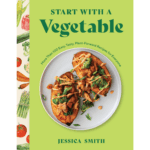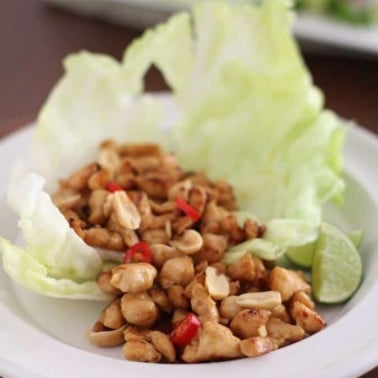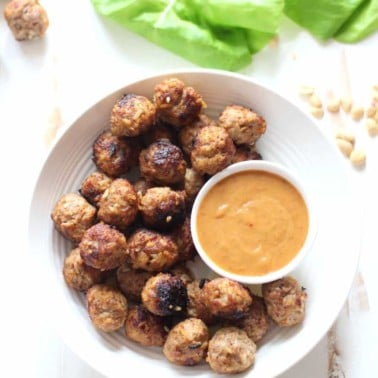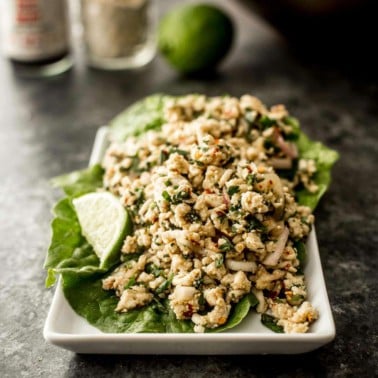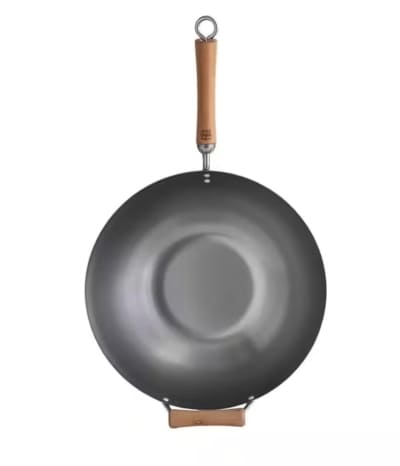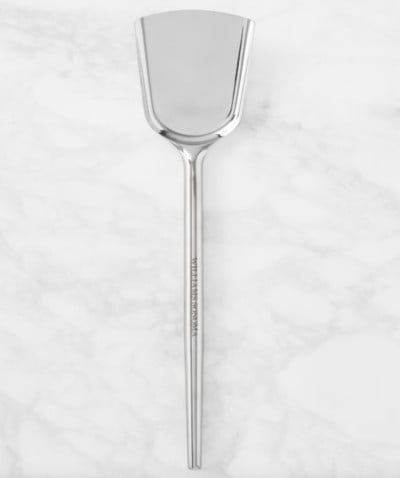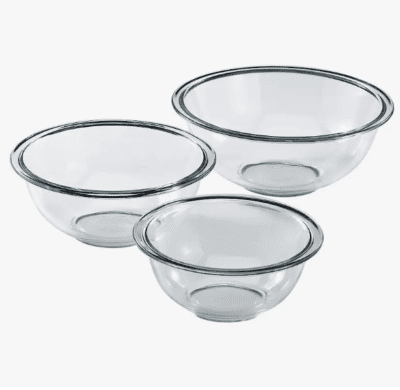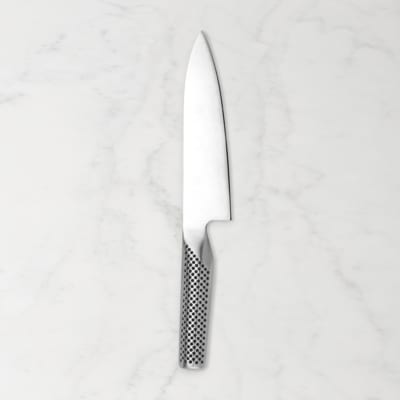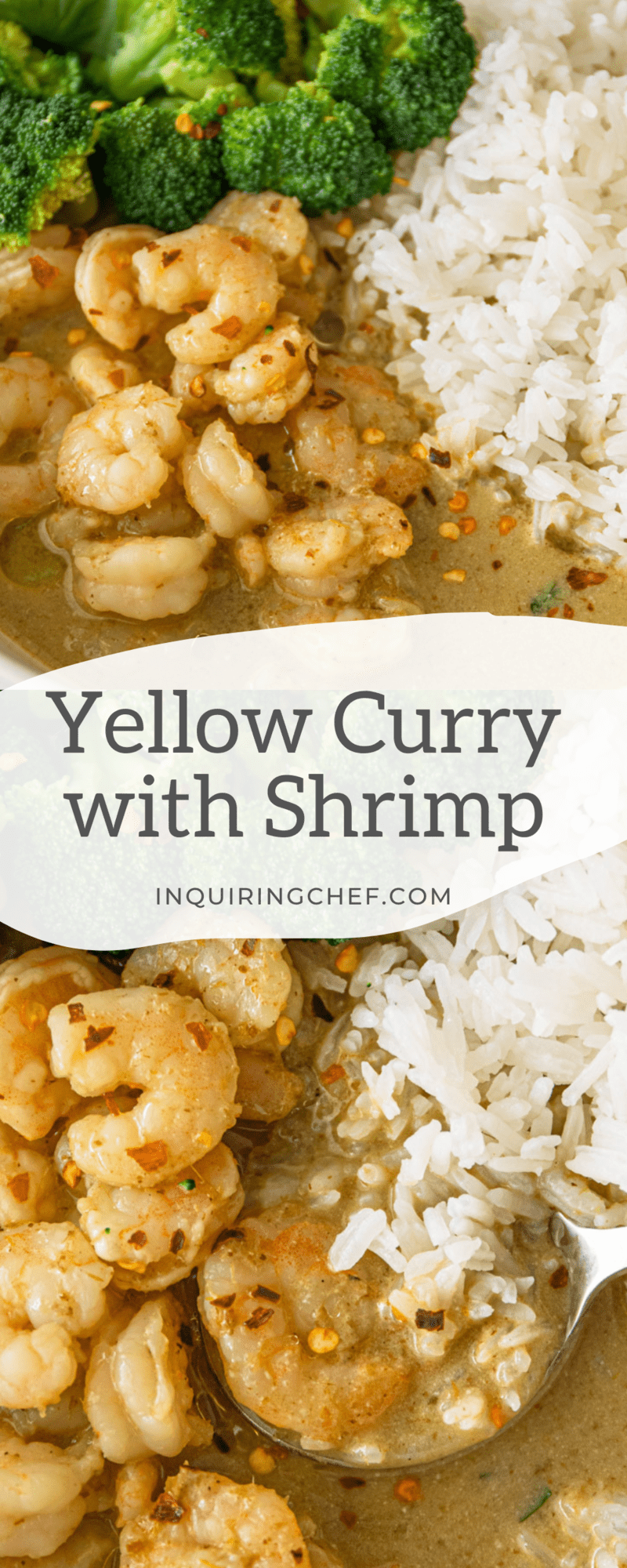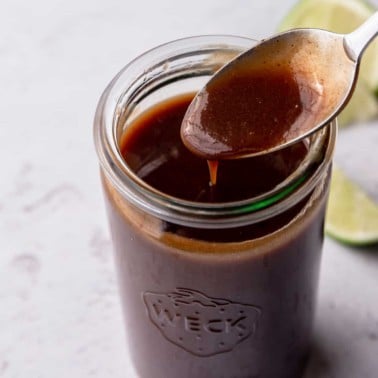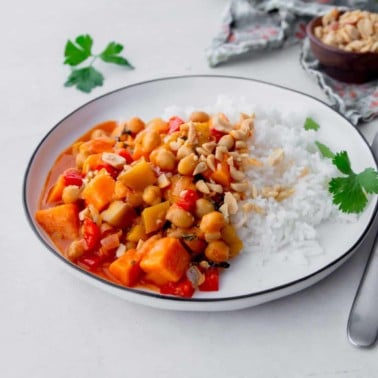Thai Yellow Curry
Published Feb 28, 2023•Updated Sep 26, 2024
This post may contain affiliate links. Please read our disclosure policy.
This gorgeous Thai yellow curry is filled with fragrant spices, tender shrimp, rich coconut milk, and served over fluffy rice. This is a Thai food favorite that is incredibly easy to make at home.
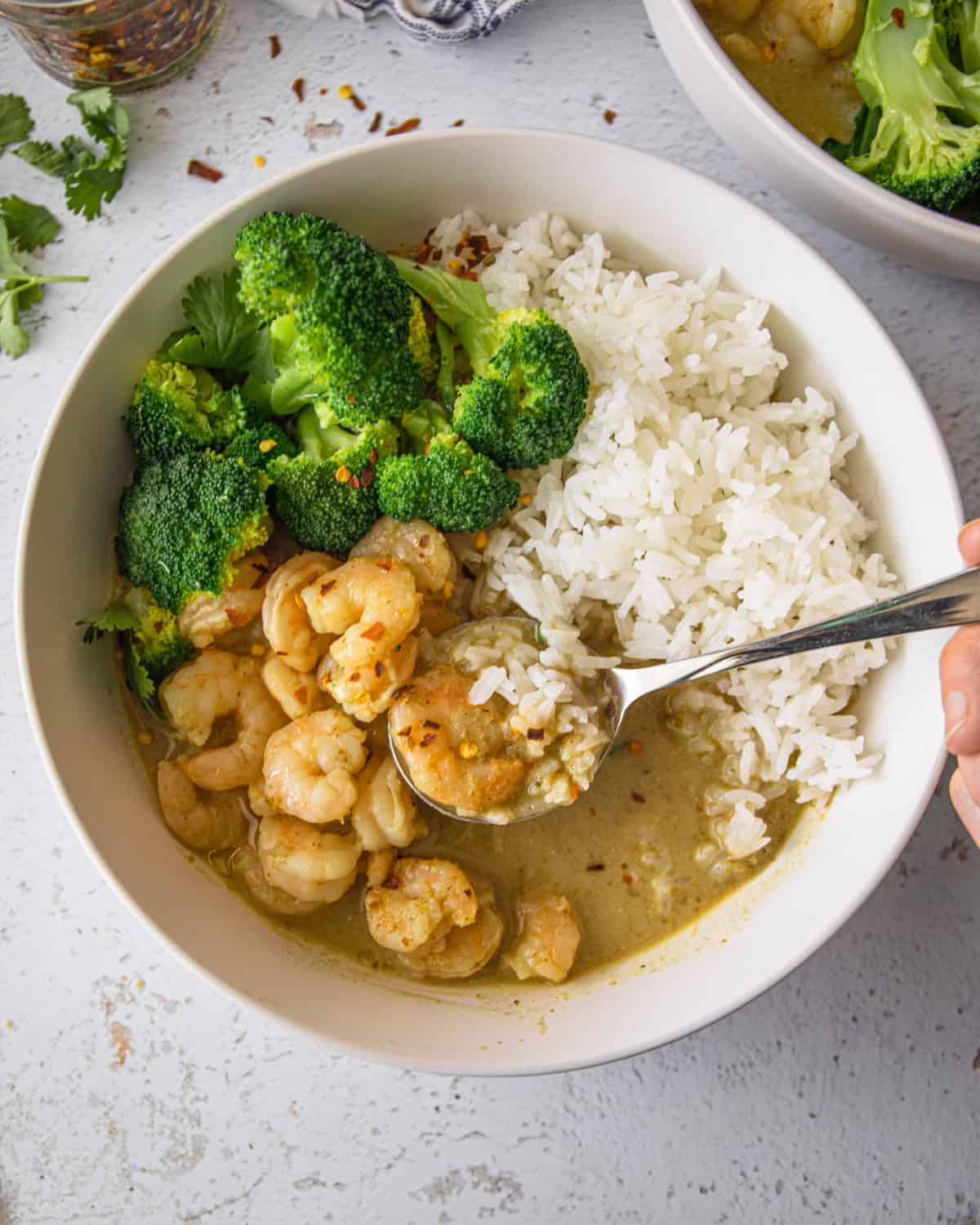
Thai curries can seem a little intimidating if you haven’t made them before, but they actually take just a few simple steps to make, and it all happens in one pan. And if you need another reason to fall in love with yellow curry? Quick-cooking shrimp simmers right in the broth and takes almost no time to cook, but you can add in veggies, substitute chicken or tofu for shrimp, and adjust the spiciness so everyone at the table has just the right balance of flavor and heat.
If you have time to order Thai take-out, then you have time to make this satisfying meal. And if you’re ready to dive into the delicious world of Thai curry, check out all of the resources I have on this site, inspired and informed by the five years I lived in Bangkok. Start with my Guide to Thai Curries. Make red curry, green curry, or the totally unique Massaman. Or check out all of my Thai recipes.
What is yellow curry?
Yellow curry is a savory dish in which vegetables and protein are simmered in a rich, aromatic, coconut broth. It is typically served with jasmine rice. Yellow curry paste gives the dish all of its flavor and is made with red chili peppers, shrimp paste, coriander and cumin seeds, fresh turmeric, lemongrass, galangal, shallots, and garlic. Compared to other Thai curries (especially red and green curry), yellow curry is fairly mild.
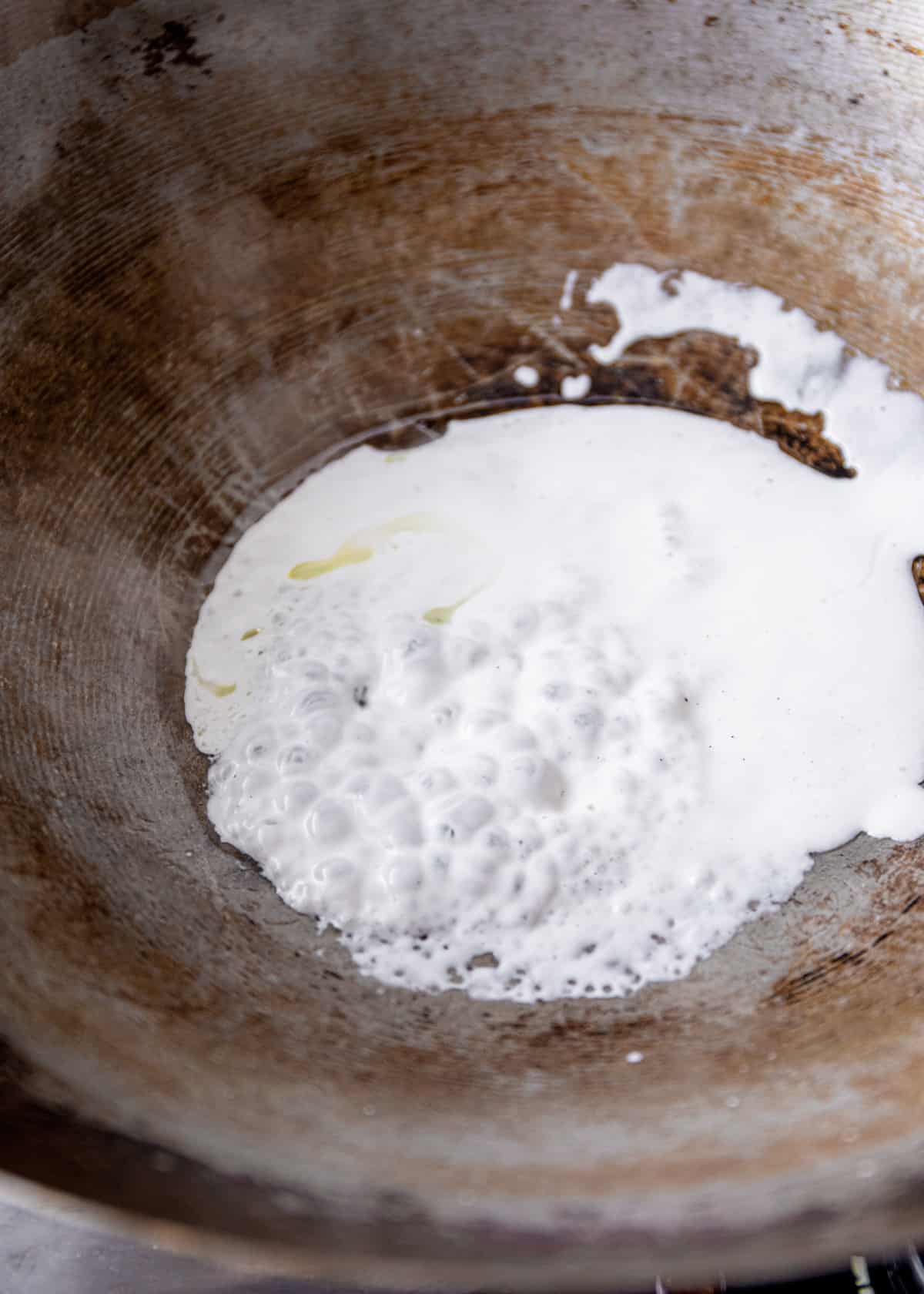
How to Make It
- Heat a Dutch oven, wok, or saute pan over medium heat.
- Add ¾ cup coconut milk (the top, thicker portion) to the pan and reduce by half while stirring. Continue stirring for 5 to 6 minutes.
- Add curry paste, saute until fragrant, 2 to 3 minutes.
- Pour in 1 cup coconut milk, stock, palm sugar, and fish sauce. Bring to a simmer.
- Stir in the shrimp, and continue simmering, 3 to 6 minutes.
- Give the curry a taste, and adjust the flavor as needed by adding sugar or fish sauce.
- Serve over rice, and garnish with basil leaves and bird’s eye chilis.
Pin this now to save it for later
Pin It NowIngredients
- Coconut Milk – The rich creaminess in this curry comes from the coconut milk. Be sure to use regular (not light) coconut milk, sold in cans in the international aisle of the grocery store.
- Thai Yellow Curry Paste – You can customize this curry by adjusting the amount of paste you use, by trying different brands, or by making the paste from scratch and adding or reducing the number of chili peppers.
- Chicken or Vegetable Stock – To thin the sauce, and create the perfect consistency.
- Shrimp – Shrimp have a mild flavor, so they do not overpower all of the wonderful spices in a curry. Purchase them deveined to save some time in the kitchen.
- Palm Sugar – Palm sugar adds sweetness in the same way refined sugar does, but it also has deeper, more complex notes that are similar to butterscotch.
- Fish Sauce – The magic ingredient that gives a good curry that distinct umami flavor.
- Thai Jasmine Rice – Jasmine rice is subtly fragrant compared to other long-grained white rice, and it’s pillowy texture is great for holding all of that curry sauce.
- Thai Basil leaves (for garnish) – Refreshing Thai basil is the perfect aromatic herb for shrimp curry.
- Birds eye chilis – These chilis are very spicy, but if you want an extra kick, they are fantastic when thinly sliced and garnished on top.
Pin this now to save it for later
Pin It Now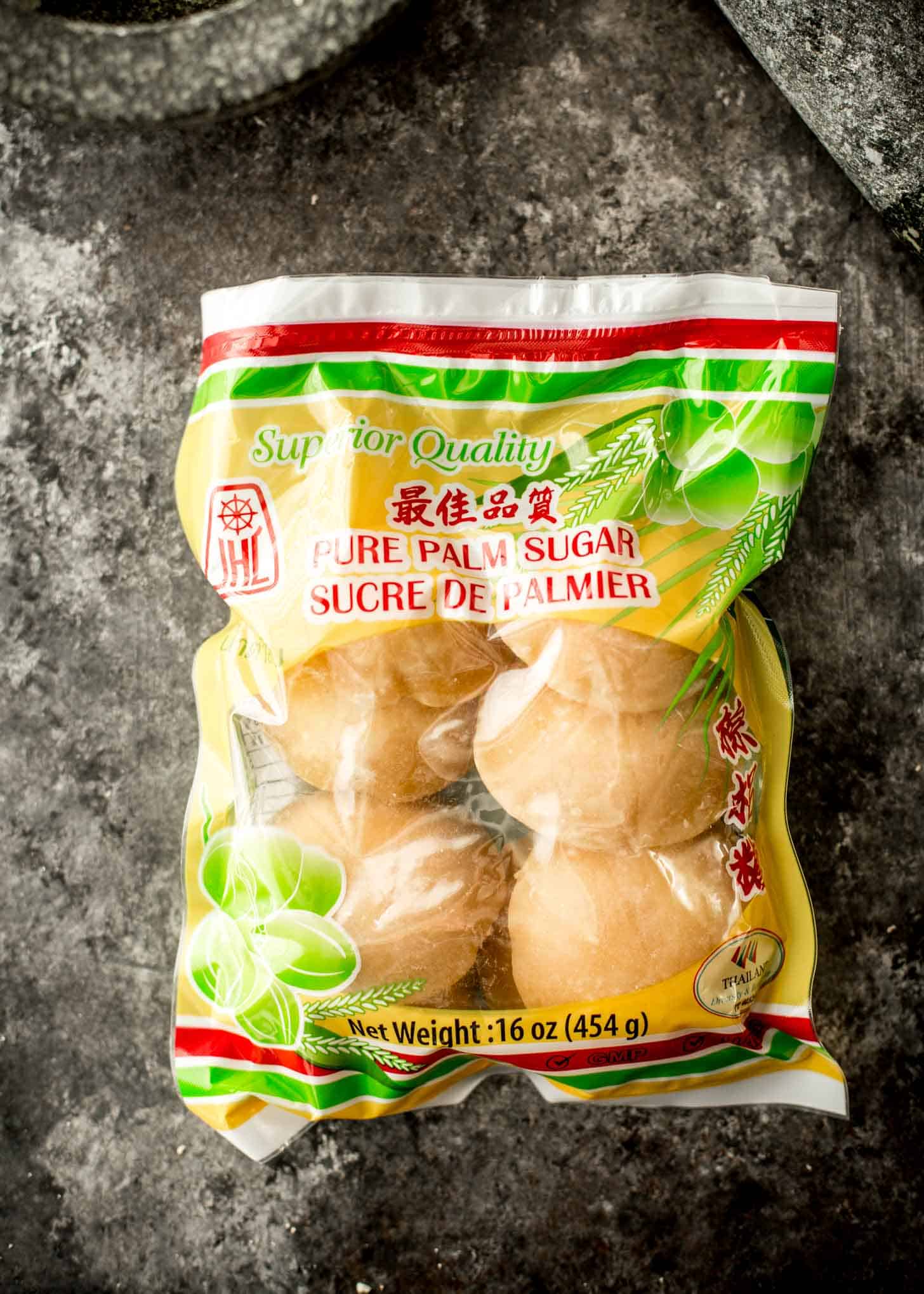
Variations
- Serve with veggies – Tender peas, cauliflower, and potatoes give shrimp curry some added texture. Incorporating diced bell pepper or wilted spinach means more healthy nutrients.
- Try different proteins – The lighter, more mild flavors of chicken and tofu make these proteins a great substitute for shrimp. You can cook both right in the curry sauce where they will absorb all of those delicious spices.

FAQs
Generally, Thai yellow curry is more mild than its red or green curry counterparts. However, the spice level of Thai curry all depends on the ingredients in the yellow curry paste. One of the key ingredients in this paste is Thai chili peppers, so the more of these peppers that are added to the paste, the higher the spice level. It’s also worth noting that some store-bought brands of curry paste are more mild than others. Non-Thai brands of curry paste like Thai Kitchen are milder than brands sourced directly from Thailand and sold at international grocery stores.
Most curry pastes include shrimp paste to give them the traditional umami flavor. Although you can substitute soy sauce for fish sauce in the curry itself, you’ll need to check the ingredients on the curry paste you use to be sure it is free of fish products. If you can’t find a store-bought version of the curry paste that is vegan, you can make a vegan version at home using the recipe below.
Yes. Most curry paste is naturally gluten-free. However, if you use a store-bought yellow curry paste, be sure you check the label to be sure that it is made in a gluten-free environment and doesn’t include any additives that contain gluten.
More Easy Thai Recipes
Favorite Tools for Asian-Inspired Recipes
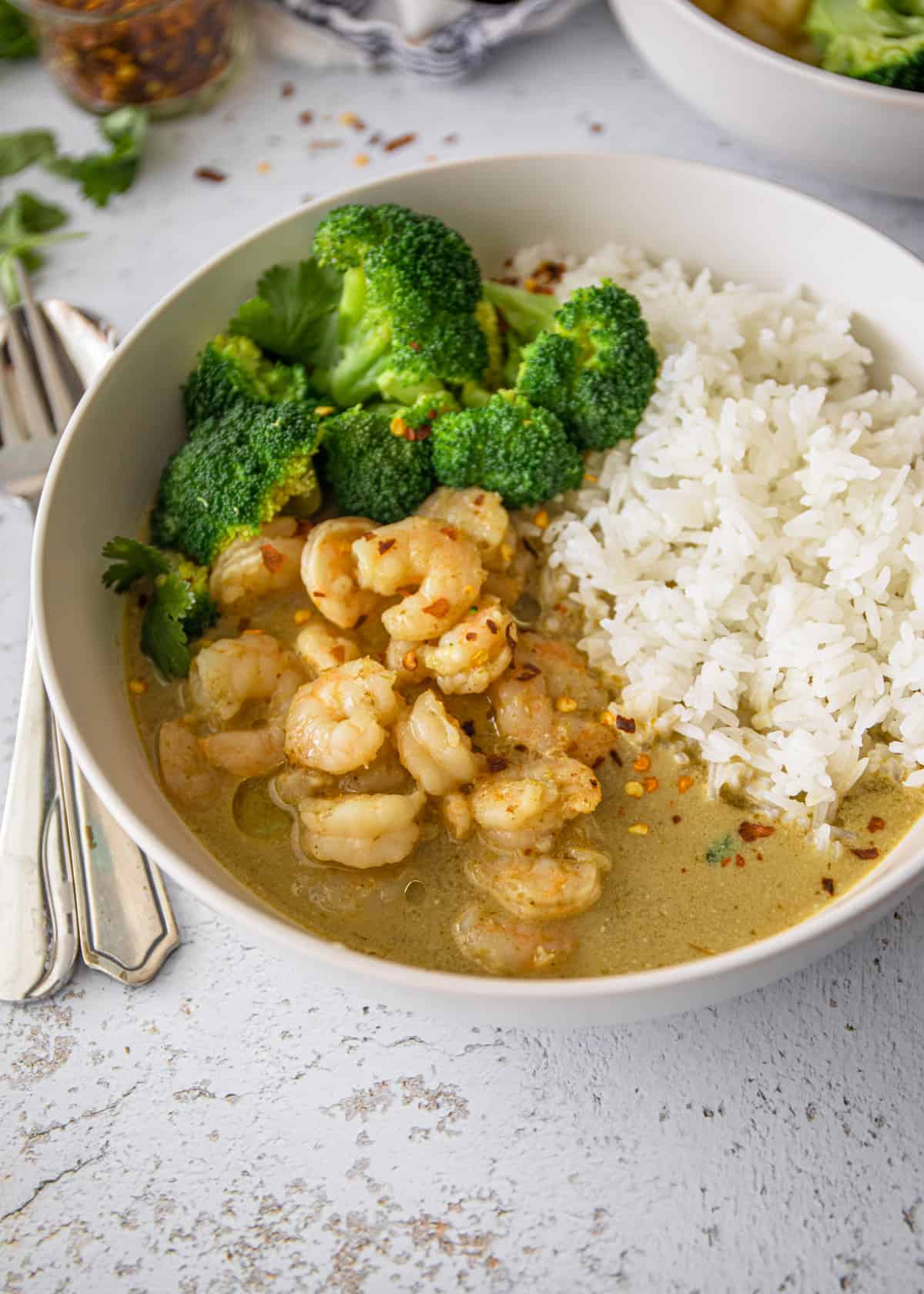
Pin this now to save it for later
Pin It Now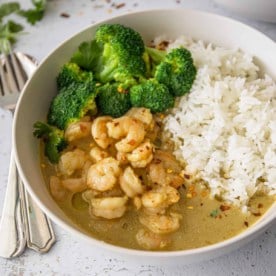
Thai Yellow Curry with Shrimp Recipe
Equipment
- Wok or skillet
Ingredients
- 1 3/4 cup coconut milk, divided
- 3 Tablespoons yellow curry paste (see note)
- 1 cup chicken or vegetable stock
- 1 pound shrimp, peeled and deveined
- 1 Tablespoon palm sugar (see note)
- 1 1/2 Tablespoons fish sauce
- Thai jasmine rice, for serving
- 1/2 cup packed Thai Basil leaves, for garnish
- birds eye chilis, thinly sliced, for garnish (optional)
Instructions
- Heat a Dutch oven, wok, or saute pan over medium heat. Add ¾ cup coconut milk (if using canned coconut milk that has separated, use the top, thicker portion of the milk) to the pan. Simmer coconut milk, stirring constantly, until it has reduced by half and you can see oil separating from the milk, 5 to 6 minutes. (Note: This step to “break” the coconut milk is part of the traditional process, but don’t worry if your coconut milk doesn’t show signs of separating after this initial cook time – just proceed with the recipe.
- Add the curry paste and saute until fragrant, 2 to 3 minutes.
- Pour the stock and 1 cup coconut milk over the curry paste. Stir in the palm sugar and fish sauce. Bring it to a simmer.
- When the curry broth is simmering, stir in the shrimp. Simmer just until the shrimp is opaque and cooked through, 3 to 6 minutes, depending on the size of the shrimp.
- Taste the curry and adjust the flavor, adding more sugar or fish sauce if needed.
- Serve the curry over rice, garnished with basil leaves and bird's eye chilis.
Notes
Nutrition
Nutrition information is automatically calculated, so should only be used as an approximation.
Pin this now to save it for later
Pin It Now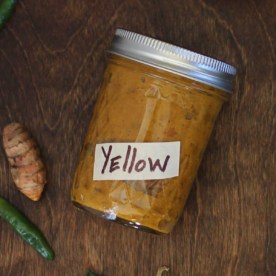
Thai Yellow Curry Paste
Equipment
- Food Processor or Mortar and Pestle
- Skillet
- Kitchen Shears
- Mixing Bowl
Ingredients
- 4 large dried red chili peppers (if you are in the United States, New Mexico or California dried peppers are a good option)
- 1 teaspoon shrimp paste (see note)
- 1 teaspoon kosher salt
- 1 teaspoon whole coriander seeds
- 1 teaspoon whole cumin seeds
- 1/2 teaspoon white peppercorns (sub pre-ground white pepper)
- 3 inches fresh turmeric, peeled and sliced (see note)
- 3 Tablespoons very thinly sliced lemongrass
- 1 Tablespoon diced galangal
- 1/4 cup diced shallots
- 3 Tablespoons thinly sliced garlic
- 1/2 teaspoon curry powder
Instructions
- Use kitchen shears to chop chili peppers into large pieces (about 4 pieces per pepper). Shake the seeds out of the peppers (the more seeds you remove the less spicy the curry paste will be). Soak peppers in warm water for 10 minutes to soften.
- While peppers soak, place shrimp paste on a small piece of foil and then fold the foil up to form a packet that completely encloses the shrimp paste.
- Heat a skillet over medium-high heat. Place shrimp paste packet onto heated skillet and toast for about 2 to 3 minutes on each side, until fragrant. Set aside.
- Turn heat under the skillet down to medium and add the coriander and cumin seeds. Cook, stirring constantly, until the spices are fragrant, 2 to 3 minutes more.
- In a clean spice grinder or using a mortar and pestle, grind the coriander seeds, cumin seeds, and white peppercorns until very fine.
- Return to dried peppers and drain off as much water as possible.
If using a mortar and pestle:
- Combine soaked chili peppers and salt in a mortar and pestle and grind until smooth.
- Add lemongrass, turmeric, galangal, shallots, and garlic. Grind again until smooth.
- Add shrimp paste, coriander seeds, cumin seeds, white peppercorns, and curry powder. Continue to grind / mix everything together until even.
If using a blender or food processor:
- In a blender or food processor, combine soaked chili peppers, salt, lemongrass, turmeric, galangal, shallots, garlic, shrimp paste, coriander seeds, cumin seeds, white peppercorns, and curry powder. Blend until the mixture forms a paste that still has a small amount of texture, pausing to scrape down the sides as needed. (Note: if the mixture does not blend easily, add water a bit at a time, as needed, to help it blend.)
- Taste curry paste and season with some additional salt, if needed.
- Curry paste can be stored in the refrigerator for about 1 week or frozen for up to a year.
Notes
Nutrition information is automatically calculated, so should only be used as an approximation.
